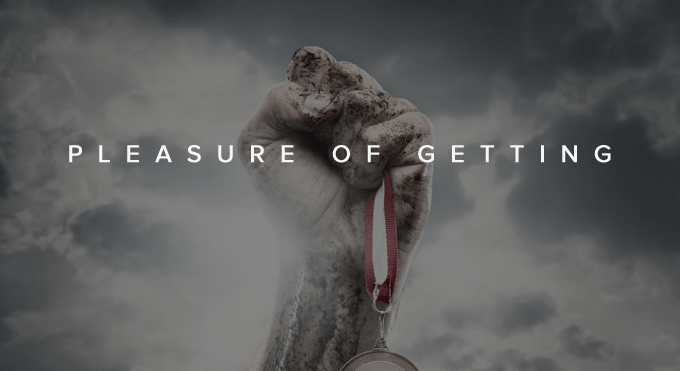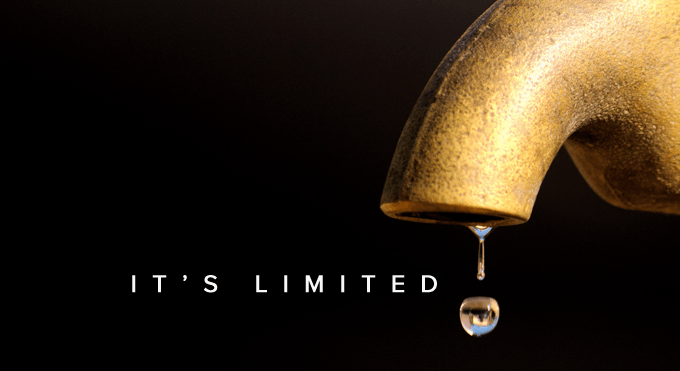
6000 years ago, Mesopotamian tribe invented a way to trade goods and services by exchanging tea, spices, food, weapons and even human skulls. This was later termed barter system. Money did not exist then. But even after money was born, barter system didn’t die. You can still see young children exchange Pokemon cards, goods swapping website are on a rise and some communities in Spain and Greece still practice barter system. It is alive, well and truly in existence.
“Take my wood, give me your chicken.”
Lead generation – A barter system
A lead is a person or a company interested in your product or service. Lead generation is the process of attracting and capturing these leads’ contact information so that they can be contacted and converted to sales.
If you look closely, lead generation is very similar to barter, where people exchange their contact information for something valuable like an eBook, a consultation, discount coupons or a webinar. The only difference is that sharing contact information isn’t exactly like parting with your chicken, and getting an e-book isn’t as valuable as getting wood. But, it still is trade.
Many businesses struggle to do this trade right, and unfortunately miss out on opportunities that could have been their leads and maybe even customers. The primary reason for that is they think keeping a form or a phone number alone is good enough to generate leads, which is never the case. You have to give something valuable to get something valuable – Barter.
How to get better at barter
Never assume that anyone will be interested in sharing their contact information unless they see real value in what they are getting in exchange. When your prospects see the value, you need to encourage them to claim that value – which is called an offer.
An offer is essentially the backbone of a successful lead generation campaign. But, there are several other factors that play a role in generating leads. Below is the list of the most important ones:
1) Replace the pain of giving by pleasure of getting
Sharing contact information (by filling up a form) is a task and tasks typically require effort. You must replace the pain of giving the contact information by the pleasure of claiming the offer. Give your prospects something so useful that they forget about the effort and start thinking about the value.
 Free resources – like eBooks, whitepapers, guides etc. show immediate value and the pleasure of getting the book overrides the pain of filling up the form. Also, a high quality resource is a proof of authority and goes beyond just lead generation to help establish brand awareness. People will remember you (and share it) if they see real value in it.
Free resources – like eBooks, whitepapers, guides etc. show immediate value and the pleasure of getting the book overrides the pain of filling up the form. Also, a high quality resource is a proof of authority and goes beyond just lead generation to help establish brand awareness. People will remember you (and share it) if they see real value in it.
Free consultation – is difficult to refuse as well. It gives the prospect a peek inside how you operate, and helps you get insights about your prospects. Last year, we decided to critique a few prospect websites and ran an offer for that. The response was so overwhelming that we had to stop the campaign. The number of requests (leads) that came in was so huge, that it became impossible to critique all of them. Nevertheless, it was a very successful lead generation and engagement campaign, and we got many unique leads.
Coupons – simply make us happy and are probably the most effective sales generation offers for consumer businesses. They were first brought into practice by Coca-cola in 1887, where they gave a free glass of coke against a coupon. This marketing strategy was so successful that by 1895 Coca-cola was known to every state in America and became one of the most renowned brands in history. It all started with a coupon and a great drink of course.
Free trials – Just like you try a dress on before you buy it, your prospects would like to evaluate your offering before they make a buying decision, especially if it requires a long-term commitment. And, they’ll happily give their contact information in exchange for a free trial. Although it might seem to prolong the sales cycle, it plays a huge role in clearing all the doubts from a prospect’s mind.
2) If you really want it, ask for it
Once an old friend asked Mr. Henry Ford “Henry, why don’t you ever buy any bolts from me?” “Heck Joe,” Mr. Ford replied, “you never asked me!”.
It’s simple. You won’t get it unless you ask for it.

Don’t assume that your prospects know what to do next. You should ask them to take action, give them clear instructions and guide them along. In simple terms, any marketing message or sales communication should always be followed by a call to action.
But, just placing a CTA everywhere is not enough. What you ask people to do, how, and when – these are equally important questions.
And, don’t forget – calls to action don’t relate only to landing pages. They are relevant for any sort of lead generation campaign – traditional or digital. Flyers, websites, online or newspaper ads, or even when you exchange your business card with someone – they all need calls to action. “Call me if you think we can work together.” That’s a call to action.
3) Show trust
According to eMarketer’s research, consumers trust user reviews 12 times more than manufacturer’s description. We feel comfortable when we are a part of a community. It gives us a sense of belonging, and we feel good when our own thoughts are validated by like-minded people. You would notice that close friends even adopt each other’s mannerisms and behaviors. It is naturally hard wired into our brains. This quote from Mokokoma Mokhonoana sums it up nicely.
“Most people say that Shakespeare rocked merely because most people say that Shakespeare rocked.”
 Reviews, Testimonials, Certifications, Awards, Recognition are trust elements which provide credibility to your marketing message. They act like a powerful triggers by indicating that everything is fine, you are in a good company. We, at LeadSquared never publish a landing page without these trust elements. It has become a go to formula for us to increase conversion rate on our landing pages.
Reviews, Testimonials, Certifications, Awards, Recognition are trust elements which provide credibility to your marketing message. They act like a powerful triggers by indicating that everything is fine, you are in a good company. We, at LeadSquared never publish a landing page without these trust elements. It has become a go to formula for us to increase conversion rate on our landing pages.
4) Shed your ego
This might look totally out of place, but if you look closely, ego can cost you a lot of leads. Ego is a person’s sense of self, which is generally false. A prospect doesn’t care about your ego, he cares about what he wants and he will bounce off quickly if he doesn’t get what he wants.
You clearly know what you want (his contact information) and to get what you want, help him find what he wants.
Confusing? Let’s take an example:
I am a designer, I create great designs (ego)
vs
You can get more customers with good design, and I can help you achieve that. (help)
 Big logos, highlighting features instead of benefits and overt bragging about yourself can turn off the prospect. Your visitors are not looking for that. Help them get what they are looking for which will eventually get you what you are looking for.
Big logos, highlighting features instead of benefits and overt bragging about yourself can turn off the prospect. Your visitors are not looking for that. Help them get what they are looking for which will eventually get you what you are looking for.
5) Show them how it’s done
Showing something in action prompts action. The longer the visitor watches your product/service in action, the more likely he is to take the next step.
A few months ago I saw a Dholki (popular Indian double sided drum) seller just outside work. I did not intend to buy it. But, he played it so well that it caught my attention. He asked me to try it. I did, with zero buying intention. To say “no” with conviction, I told him that the quality didn’t look good enough, and it would break. In response, he placed the Dholki on the ground and stood on top, putting all of his 80 Kg frame on it. I couldn’t say no after that.
 A demonstration of your offering will make it easier for the prospect to visualize what it can do for them and encourage them to move forward. This is the reason for the popularity of demo videos. You will often find them on the home pages and the landing pages. According to Hubspot, 71%of the consumers think that video explains the product better and increase the chances of purchase by a staggering 73%. Pretty impressive even when the effort of making a high class video is huge. It really pays off.
A demonstration of your offering will make it easier for the prospect to visualize what it can do for them and encourage them to move forward. This is the reason for the popularity of demo videos. You will often find them on the home pages and the landing pages. According to Hubspot, 71%of the consumers think that video explains the product better and increase the chances of purchase by a staggering 73%. Pretty impressive even when the effort of making a high class video is huge. It really pays off.
6) Narrow the choices
Too many choices create anxiety and make it difficult for the visitor to decide which action to take. This is illustrated in Hick’s law:
[perfectpullquote align=”full” cite=”” link=”” color=”” class=”” size=””]“Increasing the number of choices will increase the decision time logarithmically.” [/perfectpullquote]
It can even discourage the prospect from taking an action.
 Sometimes your marketing message has too many actions to take – Call us, Fill the form, Know more, Download now, etc. This generally backfires by confusing your prospects who eventually bounce off. For this very reason landing pages are so popular for lead generation. They don’t dilute the offer with unnecessary distractions. Just one offer, one action to take – that’s conversion and the result is a lot more leads.
Sometimes your marketing message has too many actions to take – Call us, Fill the form, Know more, Download now, etc. This generally backfires by confusing your prospects who eventually bounce off. For this very reason landing pages are so popular for lead generation. They don’t dilute the offer with unnecessary distractions. Just one offer, one action to take – that’s conversion and the result is a lot more leads.
Checkout why a landing page converts more than a homepage
7) Show scarcity
I have observed something really funny in bus stations, especially in Northern parts of India. The driver moves the bus forward a bit and then stops. Each time a bus moves ahead a few people step onto it. Then the driver reverses and gets back to the original position. Again, after 5 minutes he drags the bus forward and some more people step onto it. When the seats fill up, the journey begins. Why does a bus drives do that?
When the bus moves forward, the prospects outside think that the the bus is about to go (shortage of time); they board the bus and when other prospects see the bus filling up, they also step onto it to find the seat (possible shortage of seats). This is called the principle of scarcity which means we are attracted towards a resource which is likely to get exhausted soon.
 Scarcity is one of the most powerful triggers used in marketing to generate leads. Limited offer, Till stocks last, Limited time are some examples of scarcity. It is a tried and tested method to drive conversions.
Scarcity is one of the most powerful triggers used in marketing to generate leads. Limited offer, Till stocks last, Limited time are some examples of scarcity. It is a tried and tested method to drive conversions.
8) Never stop exploring
You create great offers, write compelling content or design something amazing but what if it goes unnoticed? When nobody notices, it cannot be acted upon, which means no lead generation. You need to reach your prospects first to convert them. But where do you find the prospects? Which source works best for you?
You will have to figure that out yourself. There is no set rule. Keep exploring.
 In August last year, when I wrote my first blog post, I shared it across all the social media platforms, almost everyday. After a few months, it suddenly started to pick up. To my disbelief, it got 15,000 hits and traveled to more than 20 countries in three days. More importantly got a lot of new leads. It would never have happened had I not experimented everyday. To figure out which platform, time and content works best for your lead generation, you need to keep looking at new places at different times. Check out how we did it.
In August last year, when I wrote my first blog post, I shared it across all the social media platforms, almost everyday. After a few months, it suddenly started to pick up. To my disbelief, it got 15,000 hits and traveled to more than 20 countries in three days. More importantly got a lot of new leads. It would never have happened had I not experimented everyday. To figure out which platform, time and content works best for your lead generation, you need to keep looking at new places at different times. Check out how we did it.
9) Find Partners
Our friend Prateek from DigitalDefynd approached us after reading one of our eBooks – Design hacks for marketers, saying that he would like to share it on his website. He did, his audience loved it. So did we, because we got a lot of unique leads from there, and he got the engagement of the audience he was looking for. It worked mutually for both the sides. That’s the power of partnership. Your reach multiplies and so does lead generation.
 It didn’t end there. We got several more offers like taking a seminar and proposals for more partnerships. Partners bring different perspective to the table which can give your lead generation a completely new dimension.
It didn’t end there. We got several more offers like taking a seminar and proposals for more partnerships. Partners bring different perspective to the table which can give your lead generation a completely new dimension.
But, don’t rely just on partners to supply leads to you. If you can’t do it yourself, your partners can’t do it either.
10) It’s OK to be annoying sometimes:
Popups, top bars, high contrast forms, uninvited links look annoying, but it is OK to be annoying sometimes if they generate the leads you are looking for. Like most other things, they have to be used carefully too.
Don’t use them when your prospects are already engaged, use them when the opportunity seems to be slipping away – like exit popups when the visitors are going to abandon the page. And, remember, your offer needs to be really relevant if you want a conversion.
For example:
Use a popup related to marketing when your prospects are on the marketing page
and
Use a popup related to sales when they are on the sales page.
 Studies have shown that the exit popups can actually increase the website conversion by 30% if used at the right time with the relevant offer.
Studies have shown that the exit popups can actually increase the website conversion by 30% if used at the right time with the relevant offer.
That brings us to the end of this article. I hope you find these ideas useful for your lead generation strategy. Remember, always think about giving value before asking for information.
Bonus: Before you leave, here’s an article that will give you a better understanding of conversion rate optimization and make your lead generation efforts even more effective.
Did I miss something? Please let me know in the comments.







